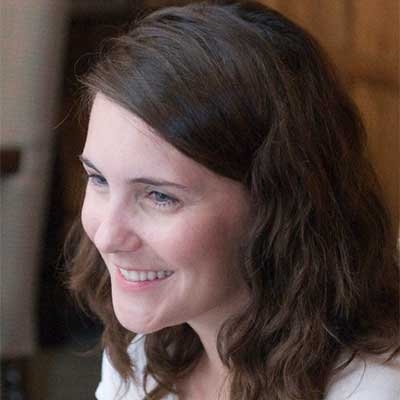A Changing Climate Means A Changing Society. The Island Press Urban Resilience Project, Supported By The Kresge Foundation And The JPB Foundation, Is Committed To A Greener, Fairer Future. This Article Was Originally Published October 12, 2018 In CoLab Radio.
"The word empower, I truly hate it. No one can empower you. We have the power already. It’s just about utilizing the power, and I think in the City of Detroit, the people have been so misled that they no longer think they have this power to really move the city forward. A lot of the work that we have done at this table, in certain communities, we have reenergized that power with the residents. And that is what it’s about— reenergizing the power residents already have."
– Sandra Turner-Handy, Denby Resident Leader/Community Organizer
Detroit, in the popular imagination, is a city in need of saviors, or at least supervision. (It is impossible to ignore the racist overtones in that perception of this majority African-American city.) To many outside observers, Detroit is best known for its poverty and crime, its exodus of jobs and people, its mournful ruins.
Less well known are Detroit’s home-grown efforts to make positive neighborhood change despite disinvestment and sometimes tone-deaf state oversight. In 2010, Detroit launched a 24-month visioning process intended to engage a high percentage of Detroit’s 700,000 residents in the crafting of a 50-year framework for Detroit’s future. Instead of focusing on bad things to be removed, this process focused on building on Detroit’s many assets.
The visioning process produced a 50-year framework—Detroit Future City—driven by a cohort of resident leaders known collectively as Impact Detroit. After the framework was finalized, this group launched a series of pilot projects across the city to actively engage residents in the physical manifestation of that future. The first such project—the Skinner Playfield Project and its corresponding Safe Routes to School Initiative in the Denby neighborhood—is a story of incredible collaboration, of grassroots youth leadership, and of hope.
During the Detroit Future City (DFC) visioning process, it become clear that “brain drain” was a common concern; Detroit’s young people were an asset worth working harder to retain. As student leader Hakeem Weatherspoon explained, “In 2014, out of the 12% of the population that graduated from high school, only 1% came back to the City of Detroit…. I think that it is shocking—why don’t you give back to the city that made you?”
To better engage young people directly with the design of their city’s future, Sandra Turner-Handy, an Impact Detroit leader and community organizer from the Denby neighborhood, worked with Jonathan Hui, a local high school teacher, to integrate the Detroit Future City framework across all four years of the curriculum. Sandra and Jonathan collaborated with the Detroit Community Design Collaborative (DCDC), which was central to the DFC planning process and continues to provide supportive infrastructure for Impact Detroit.
The Denby neighborhood was not yet receiving substantial municipal assistance, so Sandra easily convinced other Impact leaders to focus their first pilot project there. Further, the DFC cited schools as potential community hubs that would serve all neighborhoods and all residents during off-school hours, so this project would model that important concept as well. Most importantly, the Denby neighborhood needed to see change, and that change needed to be locally grown.
Working with Impact, Denby High School developed a new senior year curriculum, engaging students with urban planning and city improvement in each of their classes. As a capstone experience, students draw from their research to take part in an applied, change-oriented project in Detroit. After successfully getting an abandoned apartment building torn down and helping to weave smaller resident organizations into a Denby Neighborhood Alliance (DNA), the students began more boldly asserting their creative ideas.
Denby’s mostly residential streets are lined with beautiful bungalow-style homes, but vacancy now also marks those homes. Northeast Detroit leads the City in foreclosures—with over 12,000 households losing their homes since 2008 through mortgage or tax foreclosures in the 48205 zipcode, which encapsulates most of Denby.
Imagine being one of Denby’s more than 6,200 children, trying to walk to school in one of the most crime-ridden neighborhoods in the country. The foreclosure rate within a quarter-mile of Denby High School is 16.66%, meaning every sixth house is likely covered in vines, boarded up, marked in spray-paint with a large X to note its abandonment, and potentially housing nefarious activities. It is no surprise, then, that when Denby youth were asked what they cared most about in the community, the most popular subject of interest was crime and the second was land use.
Click here to continue reading "What Democratic Design Looks Like"...



